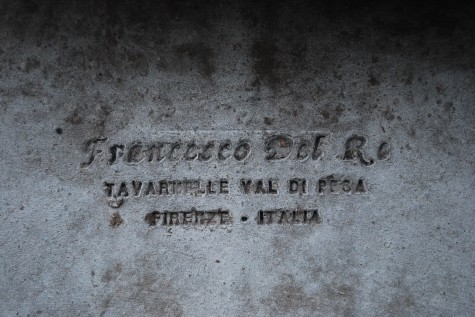
Not all handmade Italian terre cotta is created with the pale orange clay native to Impruneta in classical shapes; the Francesco Del Re pottery studio is ample evidence of that. Even the clay they use to make their pots was unfamiliar to me. Their trademarked terreforte clay is difficult to work, as it is loaded with minerals, but it produces a very tough pot. They color the clay to produce this finish- grigio. A colorant which took them years to develop is added to the clay to produce this grey/brown color.
 Some forms are simply done, and reminiscent of the classic rolled rim terre cotta pot which has served gardeners well for centuries. Handmade terre cotta is fired for a long time-relative to the few hours allotted most machine made pots. This slow firing improves the strength and chip resistance remarkably. The flared shape makes potting and unpotting easy.
Some forms are simply done, and reminiscent of the classic rolled rim terre cotta pot which has served gardeners well for centuries. Handmade terre cotta is fired for a long time-relative to the few hours allotted most machine made pots. This slow firing improves the strength and chip resistance remarkably. The flared shape makes potting and unpotting easy.
 Francesco Del Re fires their pots until they vitrify. Vitreous china and pottery refers to a clay which is subjected to sufficiently high heat for a time sufficient to turn the minerals in the clay glass-hard. I have left my handmade Italian pots out on occasion to weather the brutal Michigan winter-not a problem. But I am careful about certain things. I make sure there is a space, however small, between the pot, and the hard surface on which it sits. I might slide galvanized metal washers, or nickels under the pots. I want to insure that water drains away before it freezes and expands. Any water trapped under the pot will wreak havoc over a winter; thus I never recommend a winter outdoors for terre cotta to a client.
Francesco Del Re fires their pots until they vitrify. Vitreous china and pottery refers to a clay which is subjected to sufficiently high heat for a time sufficient to turn the minerals in the clay glass-hard. I have left my handmade Italian pots out on occasion to weather the brutal Michigan winter-not a problem. But I am careful about certain things. I make sure there is a space, however small, between the pot, and the hard surface on which it sits. I might slide galvanized metal washers, or nickels under the pots. I want to insure that water drains away before it freezes and expands. Any water trapped under the pot will wreak havoc over a winter; thus I never recommend a winter outdoors for terre cotta to a client.
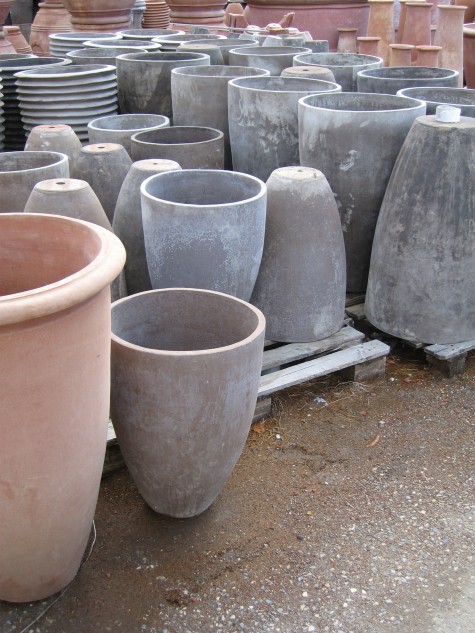
I have left them 2/3 full of drainage material and soil; I have left them empty. I have dried them out thoroughly, and left them out of the weather, under a tarp. The key to to keep water from collecting in or around them, which will expand when it freezes. The water you cannot see, the water a pot has absorbed will freeze and expand in the same way; I am sure you have seen a clay pot shattered by the interaction of water and freezing weather. There are places where clay pots are sundried, as frost is never an issue. Terre cotta literally translates as “fired earth”. Their only drawback-the necessity of hauling them inside in the fall, and back out in the spring.
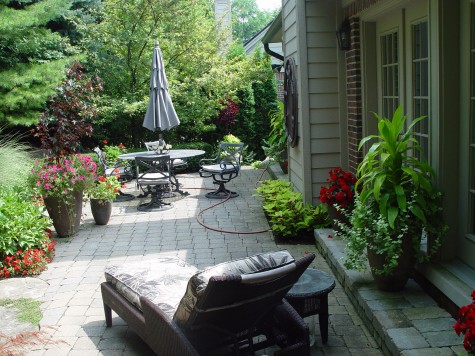 The pottery is guided by the design work of Elettra Brancolini; they refer to her as their artistic heart. Her distinctive design I would describe as softly modern, sometimes updated classical, and frequently very contemporary. I admire that the pottery has put their weight behind her hand. I am sure she gardens; the pots have a generous space at the top to plant. The proportions of this pot in all its sizes are perfection. They quietly and beautifully set off any planting. They are as beautiful indoors as out.
The pottery is guided by the design work of Elettra Brancolini; they refer to her as their artistic heart. Her distinctive design I would describe as softly modern, sometimes updated classical, and frequently very contemporary. I admire that the pottery has put their weight behind her hand. I am sure she gardens; the pots have a generous space at the top to plant. The proportions of this pot in all its sizes are perfection. They quietly and beautifully set off any planting. They are as beautiful indoors as out.
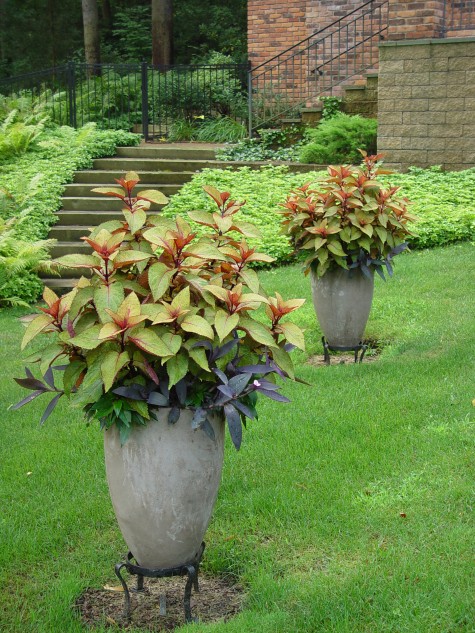
The pale marks and streaks on the surface of this Vaso Flute – the evidence of the human hand. Perhaps a hand intent on refining the shape of the clay brought water to the surface. These marks are the signature of the artist. A machine made terra cotta pot is perfectly uniform in thickness and surface; there is no human story to be read. On visiting the pottery, Rob was struck by the fact that each artisan would be working on 30 or 40 pots at the same time; creating pots of this size from hundreds of pounds of wet clay requires that each pot be built in stages. They would collapse from their own wet weight if not permitted to dry some while in process. Even with painstaking fabrication, Rob says the pottery is littered with countless pots that did not survive the firing.
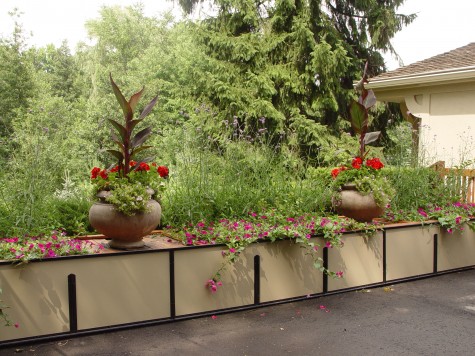 The color of the pots changes with the light, and appears different in different places. The creamy, barely yellow of this retaining wall has brought out the warm brown of the clay. Another cooler colored spot might make the pots read a warm grey.
The color of the pots changes with the light, and appears different in different places. The creamy, barely yellow of this retaining wall has brought out the warm brown of the clay. Another cooler colored spot might make the pots read a warm grey.

But by far and away the most revolutionary aspect of these terre cotta pots-they are frostproof. The clay is so full of minerals, and fired for so long at such high temperatures that they weather our winter with ease. We have roughly six months of gardening weather, and six months of winter in Michigan. The idea that terre cotta pots could be left out over the winter here-that I love. You can see in the picture above the slightest space between the bottom of the pot, and the porch surface. This client was able to dress her porch and enjoy her pots throughout the winter.
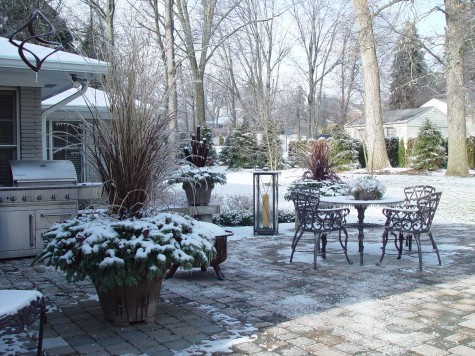
Pots like this make it possible to have a garden of a different sort during the long winter months; this I like.